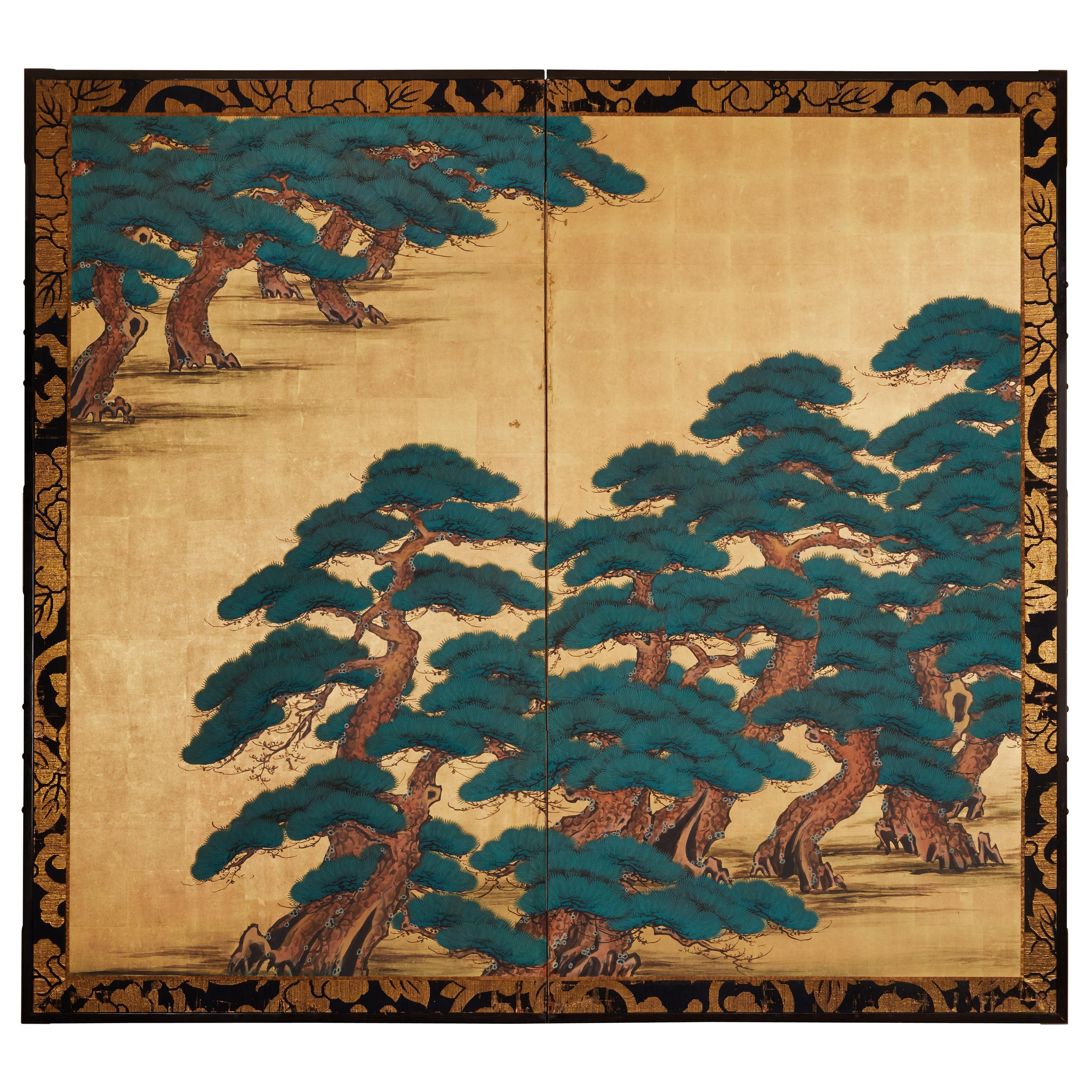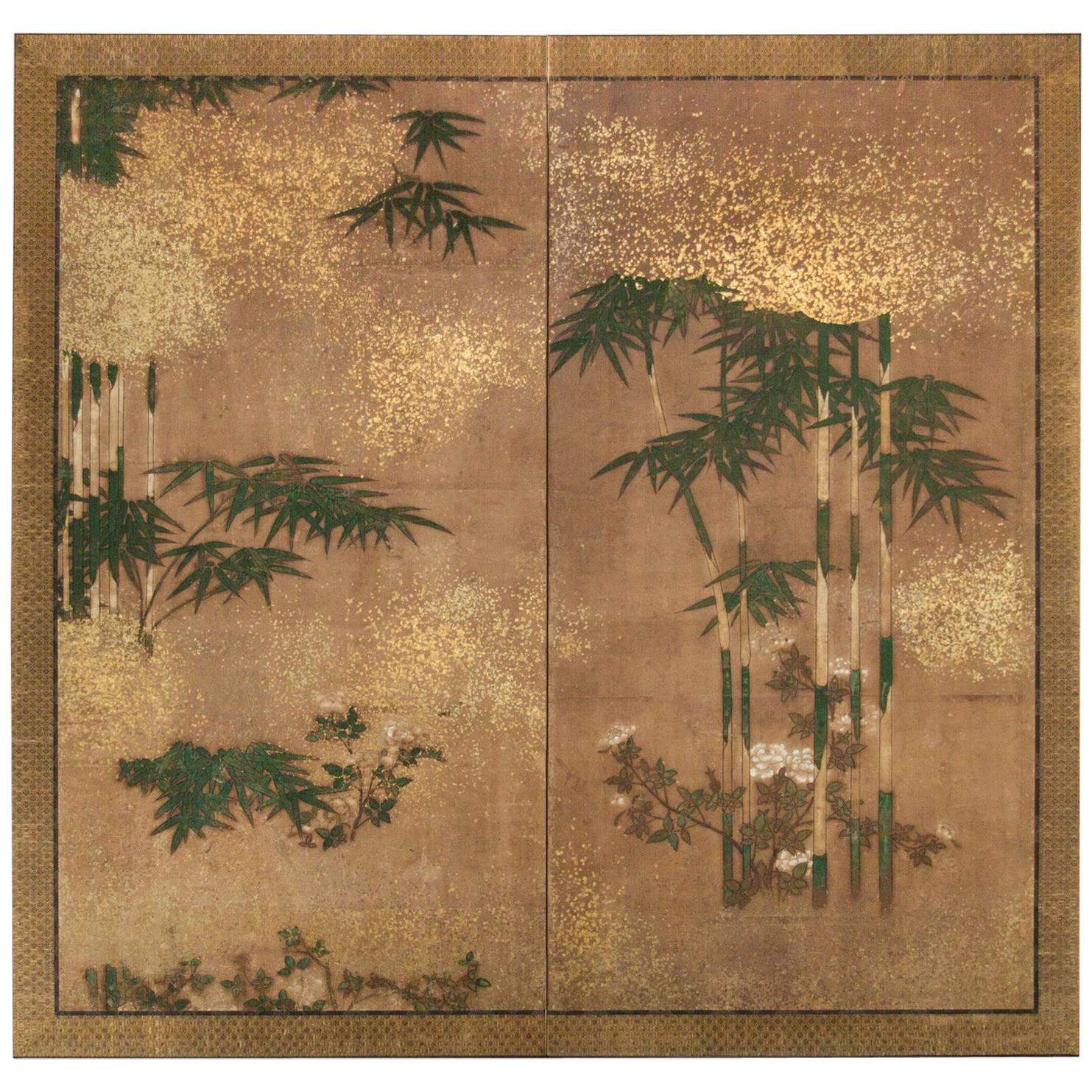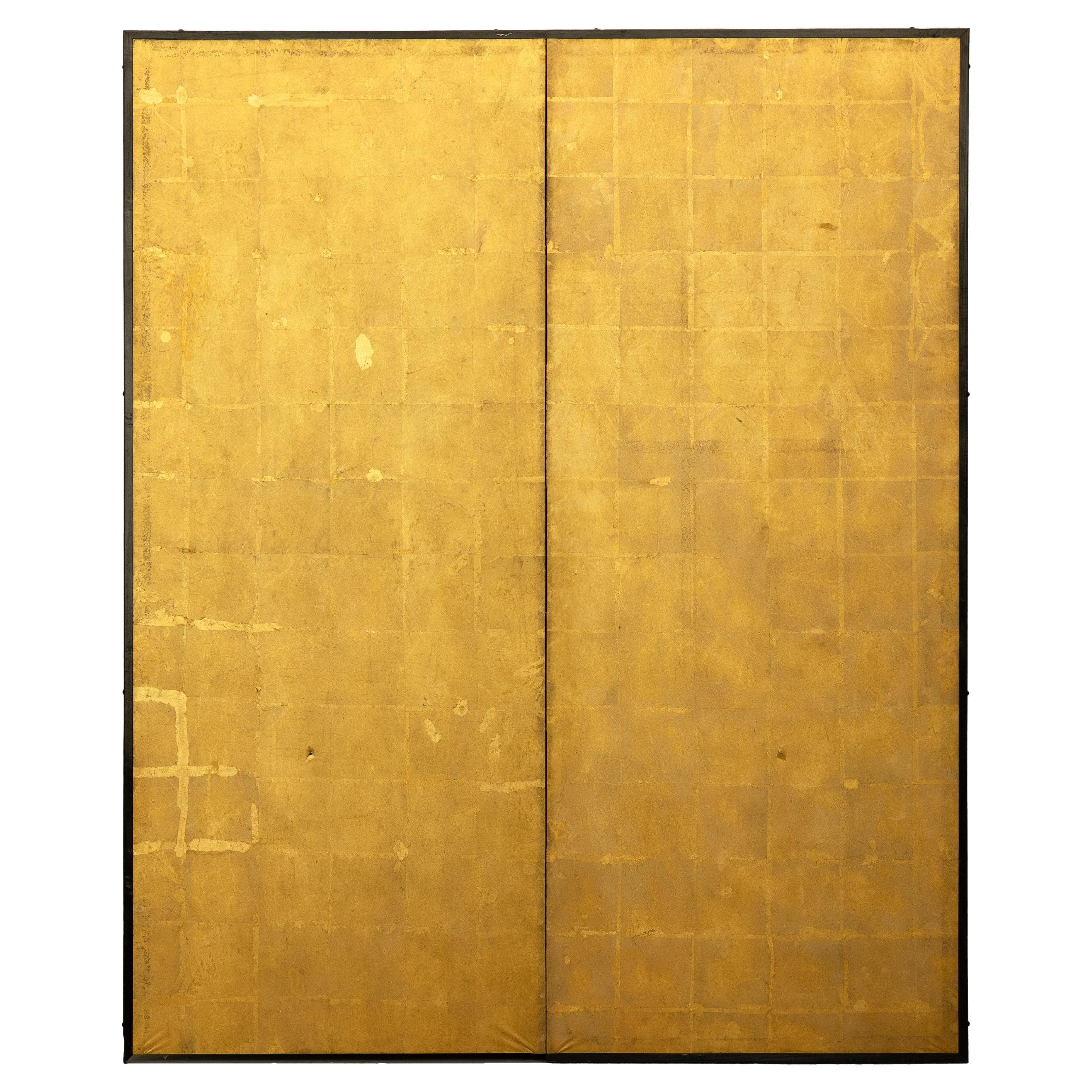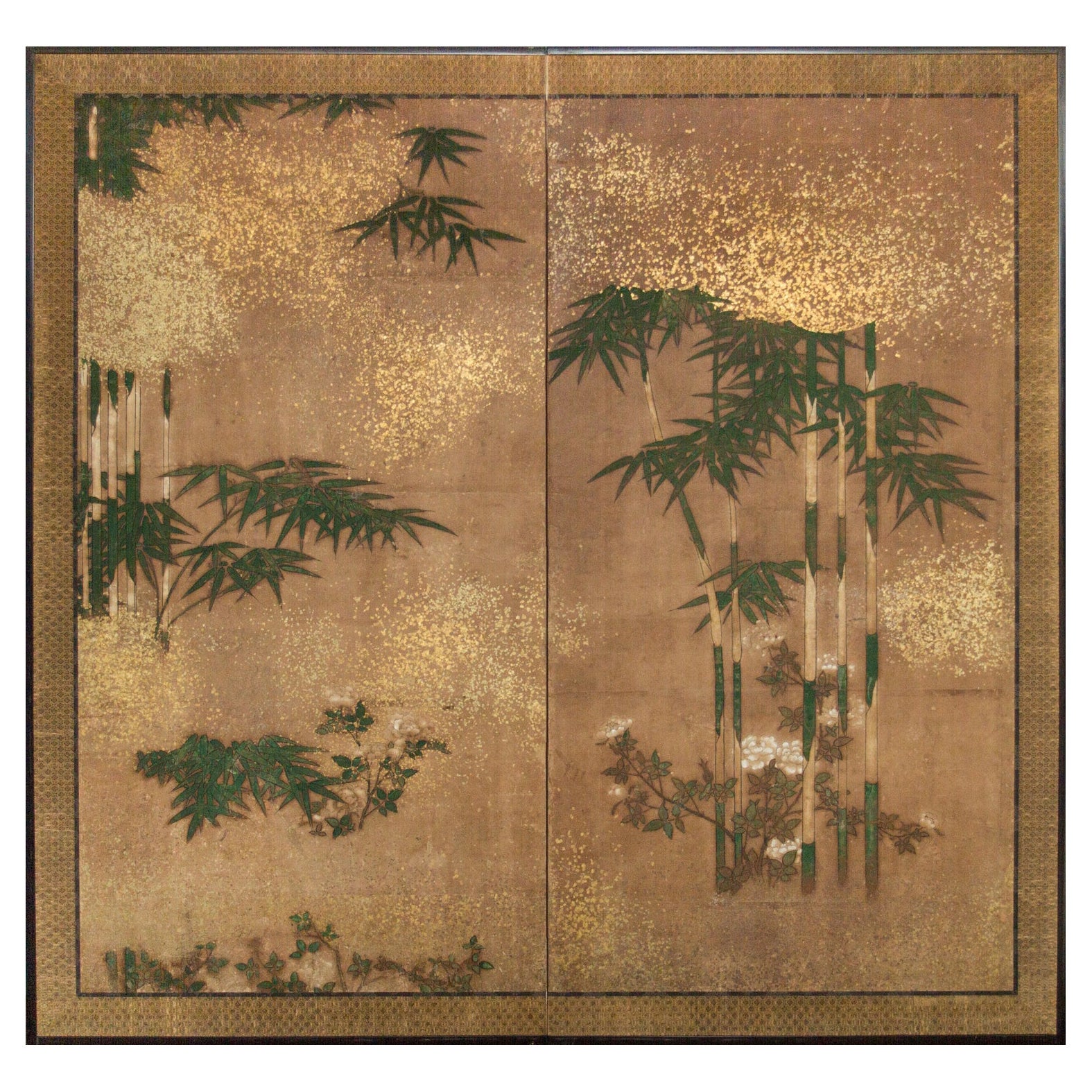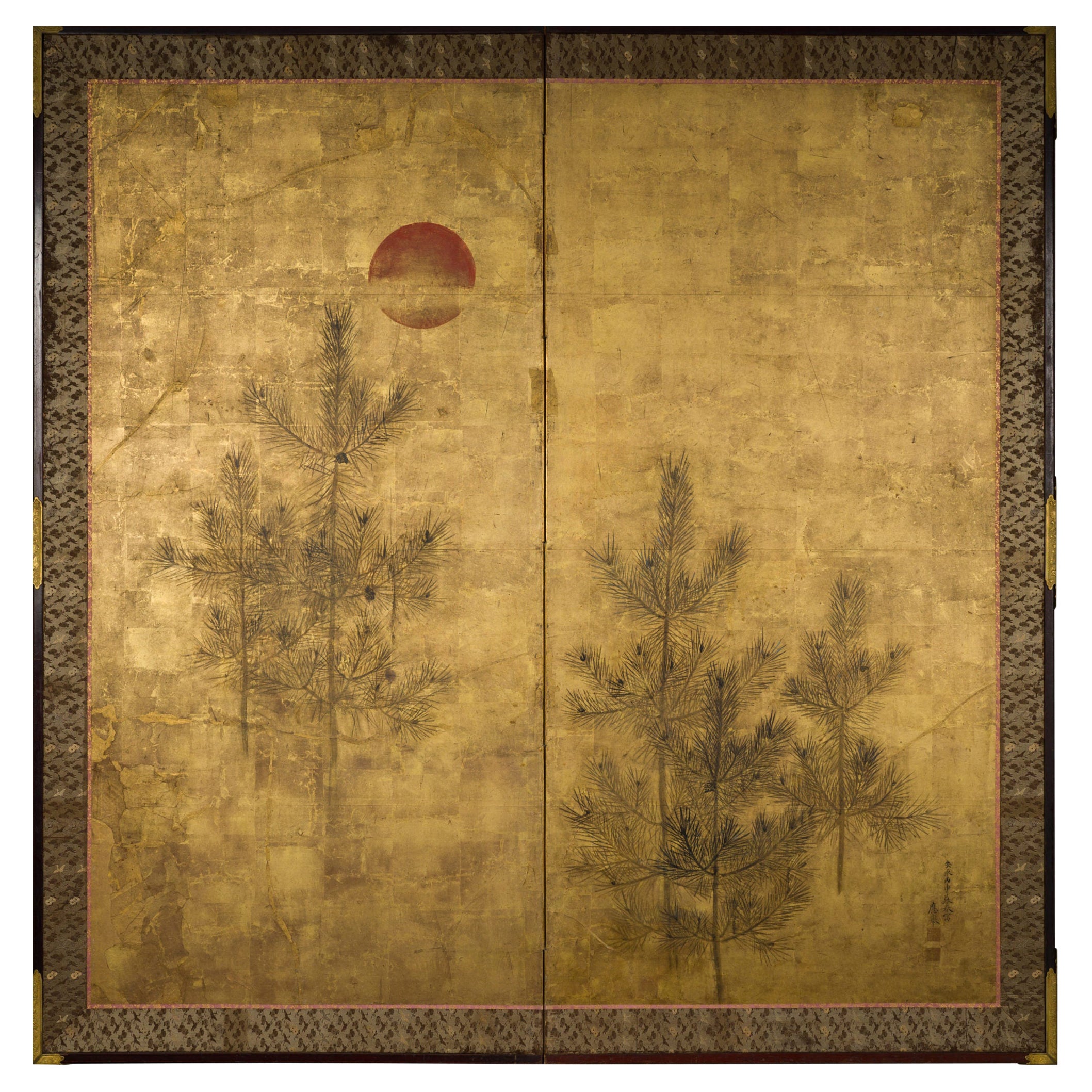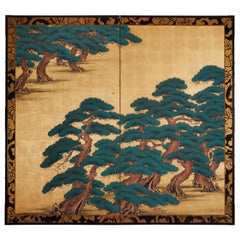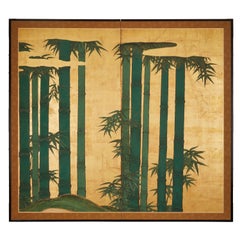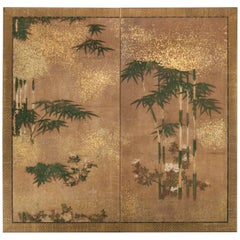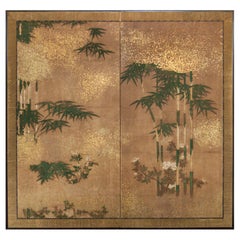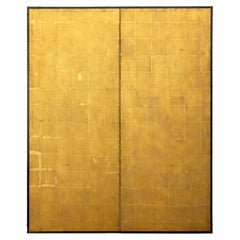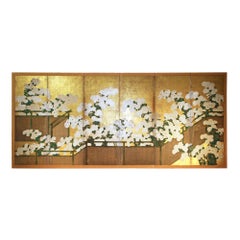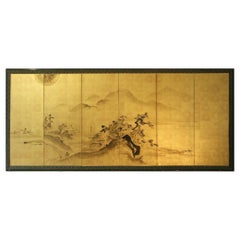Items Similar to Japanese 17th Century Two Panel Screen, Pine with Gold Dust
Want more images or videos?
Request additional images or videos from the seller
1 of 8
Japanese 17th Century Two Panel Screen, Pine with Gold Dust
$35,000
£26,576.33
€30,392.02
CA$48,900.08
A$54,387.56
CHF 28,399.49
MX$661,838.73
NOK 362,704.86
SEK 340,153.17
DKK 226,827.27
Shipping
Retrieving quote...The 1stDibs Promise:
Authenticity Guarantee,
Money-Back Guarantee,
24-Hour Cancellation
About the Item
Beautiful 17th century painting of pine trees. Painting in good condition on 19th century mounting. Mineral pigments and gold dust on mulberry paper with nice old brocade. Can be mounted as 2 separate panels for an additional charge.
- Dimensions:Height: 68 in (172.72 cm)Width: 74.25 in (188.6 cm)Depth: 0.75 in (1.91 cm)
- Style:Edo (Of the Period)
- Materials and Techniques:
- Place of Origin:
- Period:
- Date of Manufacture:17th Century
- Condition:17th century painting on 19th century mounting. Painting in good condition.
- Seller Location:Hudson, NY
- Reference Number:Seller: S16561stDibs: LU855114128921
About the Seller
5.0
Recognized Seller
These prestigious sellers are industry leaders and represent the highest echelon for item quality and design.
Established in 1971
1stDibs seller since 2008
166 sales on 1stDibs
Typical response time: 13 hours
Associations
The Art and Antique Dealers League of AmericaAntiques Associations Members
- ShippingRetrieving quote...Shipping from: Hudson, NY
- Return Policy
Authenticity Guarantee
In the unlikely event there’s an issue with an item’s authenticity, contact us within 1 year for a full refund. DetailsMoney-Back Guarantee
If your item is not as described, is damaged in transit, or does not arrive, contact us within 7 days for a full refund. Details24-Hour Cancellation
You have a 24-hour grace period in which to reconsider your purchase, with no questions asked.Vetted Professional Sellers
Our world-class sellers must adhere to strict standards for service and quality, maintaining the integrity of our listings.Price-Match Guarantee
If you find that a seller listed the same item for a lower price elsewhere, we’ll match it.Trusted Global Delivery
Our best-in-class carrier network provides specialized shipping options worldwide, including custom delivery.More From This Seller
View AllJapanese Two Panel Screen: Pine on Heavy Gold
Located in Hudson, NY
Kano School painting in mineral pigments on mulberry paper with heavy gold leaf and a silk brocade border made of antique monk's robes.
Category
Antique Late 19th Century Japanese Paintings and Screens
Materials
Gold Leaf
Japanese Two Panel Screen: Bamboo on Gold
Located in Hudson, NY
Bamboo grove on a knoll with stylized gold mist. Mineral pigments on gold leaf with silk brocade border.
Category
Antique Early 19th Century Japanese Paintings and Screens
Materials
Gold Leaf
Japanese Two Panel Screen: Bamboo Grove on Mulberry Paper with Gold Dust
Located in Hudson, NY
Kano School painting of a bamboo grove with blooming flowers and gold dust mists. Painted in mineral pigments on mulberry paper with gold dust and a silk brocade border.
Category
Antique Early 19th Century Japanese Edo Paintings and Screens
Materials
Gold
Japanese Two Panel Screen: Bamboo Grove on Mulberry Paper with Gold Dust
Located in Hudson, NY
Kano School painting of a bamboo grove with blooming flowers and gold dust mists. Painted in mineral pigments on mulberry paper with gold dust and a silk brocade border.
Category
Antique Early 19th Century Japanese Paintings and Screens
Materials
Gold
Japanese Two Panel Screen Pine and Red Sun on Gold
Located in Hudson, NY
Mineral pigments on gold leaf. Signature and seal read: Anei H-eishin Boshun ga, dated: late spring 1766 with a dedication to Okyo (Maruyama).
Category
Antique Mid-18th Century Japanese Paintings and Screens
Materials
Gold Leaf
Japanese Two Panel Screen: Pine in Snow
Located in Hudson, NY
Kano School, Mineral pigments on gold leaf with silk brocade border and lacquer wood trim.
Category
Antique Mid-19th Century Japanese Paintings and Screens
Materials
Gold Leaf
You May Also Like
Antique Early 20th-Century Japanese Two-Panel Gold-Leaf Byōbu Screen
Located in Yonkers, NY
This elegant two-panel byōbu screen likely dates to the early 20th century and embodies the timeless refinement of Japanese folding screens. Each panel is constructed on a lightweigh...
Category
Early 20th Century Japanese Screens and Room Dividers
Materials
Gold Leaf
Antique 19th Century Japanese Two-Panel Screen ‘Byobu’, Kano School, Edo Period
Located in London, GB
Japanese Kano School Edo period two-panel screen depicting flowering prunus and bamboo on a rock formation, with colorful birds next to a body of water. ...
Category
Antique Mid-19th Century Japanese Edo Paintings and Screens
Materials
Gold Leaf
Japanese Screen mid Edo gold leaf
By Japanese Studio
Located in Brescia, IT
This 18th century six-panel screen is truly special. The author is unknown, but his singular genius in portraying dozens of chrysanthemum flowers created with the white of the "gofun...
Category
Antique Mid-18th Century Japanese Edo Paintings and Screens
Materials
Gold Leaf
Japanese Screen Landscape on Gold Leaf with Inks
By Japanese Studio
Located in Brescia, IT
Six-panel screen from the Tosa school painted with ink on gold leaf depicting a relaxing oriental landscape with pagodas, figures on boats and a beautiful sun in the sky.
The screen ...
Category
Antique Late 19th Century Japanese Meiji Paintings and Screens
Materials
Gold Leaf
A pair of six-panel folding screens depicting two pine trees (matsu)
Located in Milano, IT
A pair of six-panel folding screens from the Kano school, painted in ink and pigments on paper.
The naturalistic composition is dominated by two lush green pine trees extending from ...
Category
Antique 19th Century Japanese Paintings and Screens
Materials
Paper
$43,133 Sale Price
20% Off
Japanese antique screen - EDO period - Willow over a stream
Located in Prahran, Victoria
Antique Japanese 6 panel screen from the early Edo period (C1650). One of a pair (both available). This magnificent golden screen shows...
Category
Antique 1650s Japanese Edo Paintings and Screens
Materials
Gold Leaf
More Ways To Browse
Japanese Gold Screen
Mounted Minerals
19th Century Japanese Screen
Painting Antique Pine Furniture
Japanese Antique Gold Screen
2 Panel Screen
Japanese Screen Tree
Edo Screen Gold
17th Century Japanese Paintings
Japanese Screens Pines
2 Panel Asian Screens
17th Century Japanese Screens
Antique 2 Panel Japanese Screens
Antique Japanese Painting
Japanese Wood Sign
Vintage Asian Art Paintings
Chinese Art Panel
Japanese Gold Leaf
